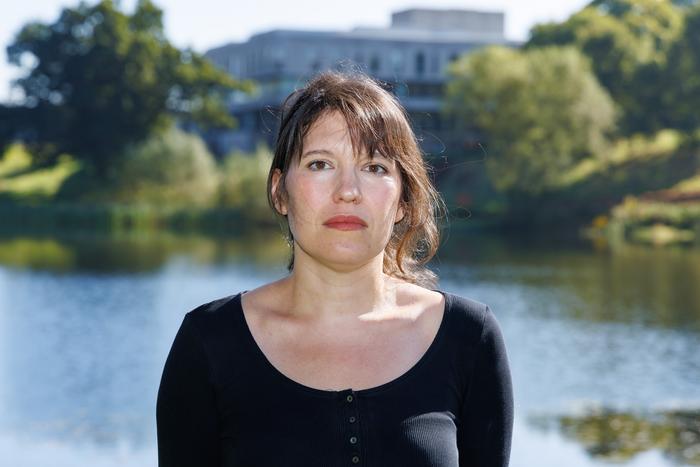
In a transformative breakthrough in aquatic biology, researchers at the University of Stirling have illuminated the remarkable regenerative mechanisms underlying the skin of Atlantic salmon (Salmo salar). Their pioneering study uncovers a previously unknown population of stem cells in salmon skin, redefining our understanding of wound healing and tissue regeneration in teleost fish. This discovery carries profound implications for both fundamental biology and the aquaculture industry, especially in tackling challenges related to tissue integrity and disease resistance.
Wound healing in fish has long been a subject of interest due to its implications for survival in aquatic environments. While much is known about mammalian skin repair, fish skin presents a unique model given its continuous exposure to environmental stressors and pathogens in marine settings. The new research, spearheaded by Dr. Rose Ruiz Daniels from the University’s Institute of Aquaculture, focused on the cellular dynamics within the skin during healing processes. The team employed cutting-edge single-nucleus RNA sequencing coupled with spatial transcriptomics to map cellular identities and their transitions during a wound healing time course.
Central to their findings was the identification of fibroblast-like stem cells, more specifically mesenchymal stromal cells (MSCs), which appear to orchestrate the critical remodelling phase of skin repair. These MSCs were found not only at the site of injury but also consistently throughout intact skin, suggesting they form a stable and integral component of the salmon’s barrier tissues. This points toward a role far beyond reactive regeneration—possibly encompassing the maintenance of skin homeostasis under normal physiological conditions.
Intriguingly, during the remodelling phase, MSCs exhibited heightened transcriptional activity, suggesting they are dynamically engaged in tissue reconstruction. The gene expression patterns indicated these cells possess pluripotent capabilities, with signs of differentiation into diverse cell lineages including osteogenic (bone) and adipogenic (fat) pathways. Such multipotent behavior implies a sophisticated regenerative blueprint, where skin healing is interconnected with deeper tissue restoration, potentially involving scales, connective tissue, and musculature.
MSC-like cells have been extensively characterized in mammals, where their roles in tissue regeneration and immune modulation are well established. However, this study reveals that in teleost fish, the pluripotency of MSCs may be notably more flexible. This enhanced stemness suggests an evolutionary divergence in regenerative strategies between aquatic vertebrates and terrestrial organisms. Such plasticity could underlie the remarkable resilience observed in fish, which frequently endure physical trauma, environmental insults, and pathogen attacks in their natural habitats.
The spatial transcriptomics data further delineated discrete niches within the skin where various MSC subpopulations reside. This cellular heterogeneity and their precise localization underscore a complex microenvironment that governs stem cell behaviors. Understanding these spatial relationships is not only vital for deciphering natural regeneration but also offers a blueprint for potential therapeutic manipulations aimed at enhancing tissue repair pathways.
From an applied perspective, the findings hold particular promise for the aquaculture sector. Atlantic salmon farming is frequently hampered by high mortality rates linked to skin damage and infections. Barrier tissue health remains a persistent challenge, with non-healing wounds often exacerbating vulnerability to pathogenic incursions. By unraveling the cellular mechanisms that underpin wound repair and skin integrity, this research sets the stage for innovative biotechnological interventions. Potential applications include genetic or pharmacological modulation of MSC activity to accelerate healing, bolster structural resilience, and reduce disease susceptibility in farmed salmon populations.
Moreover, the research poignantly addresses broader environmental concerns impacting aquaculture. Climate change is intensifying thermal fluctuations and disease pressures in marine ecosystems, amplifying risks to fish health and industry sustainability. Enhanced regenerative strategies, informed by a detailed understanding of fish skin stem cell biology, could thus form part of adaptive responses to these mounting stressors, enabling more resilient aquaculture practices in a rapidly changing world.
Dr. Ruiz Daniels emphasized the novelty and potential scope of these insights: “Our discovery that MSCs are a functional and persistent component of salmon skin reframes how we think about fish tissue regeneration. The multipotency and spatial organization of these cells open exciting avenues for research and practical applications alike.” She indicated that ongoing studies aim to manipulate these cellular populations in vivo to test therapeutic potentials directly.
This research initiative exemplifies a powerful collaborative model, bringing together expertise from the University of Stirling, the Roslin Institute, Nofima, and the University of Prince Edward Island. The multidisciplinary team combined genomic biology, aquaculture science, and computational analysis to produce a comprehensive atlas of skin cellular transitions and regenerative potential. These collaborations accelerate the translation of fundamental insights into real-world solutions that could transform salmon farming.
The study, published in BMC Biology, sets a new benchmark in teleost regenerative biology and reinforces the importance of advanced genomic tools in elucidating complex cellular ecosystems. As the aquaculture industry grapples with increasing demands and ecological pressures, harnessing the intrinsic regenerative capacities of fish skin may become a cornerstone for sustainability and animal welfare.
Future research will likely delve deeper into the molecular drivers that regulate MSC plasticity, their interactions with immune cells, and the environmental signals that modulate their activity. Such knowledge will enhance our capacity to engineer precise interventions that support tissue repair and immune defense in aquaculture species, advancing both science and industry innovation.
This pioneering study not only enriches our biological understanding but also sets a precedent for exploring stem cell dynamics in other aquatic species. By bridging molecular biology, ecology, and applied science, it offers a compelling example of how modern omics technologies can revolutionize regenerative medicine and sustainable food production.
—
Subject of Research: Animal tissue samples
Article Title: Transcriptomic characterization of transitioning cell types in the skin of Atlantic salmon
News Publication Date: 28-Apr-2025
Web References: https://bmcbiol.biomedcentral.com/articles/10.1186/s12915-025-02196-w
Image Credits: University of Stirling
Keywords: Aquaculture
Tags: aquaculture industry advancementscellular dynamics in skin repairfibroblast-like stem cells in fishimplications for disease resistance in fishmesenchymal stromal cells in healingregenerative mechanisms in fishRNA sequencing in biological researchskin healing in Atlantic salmonstem cells in salmon skintissue regeneration in teleost fishtransformative breakthroughs in aquatic biologywound healing in aquatic environments





